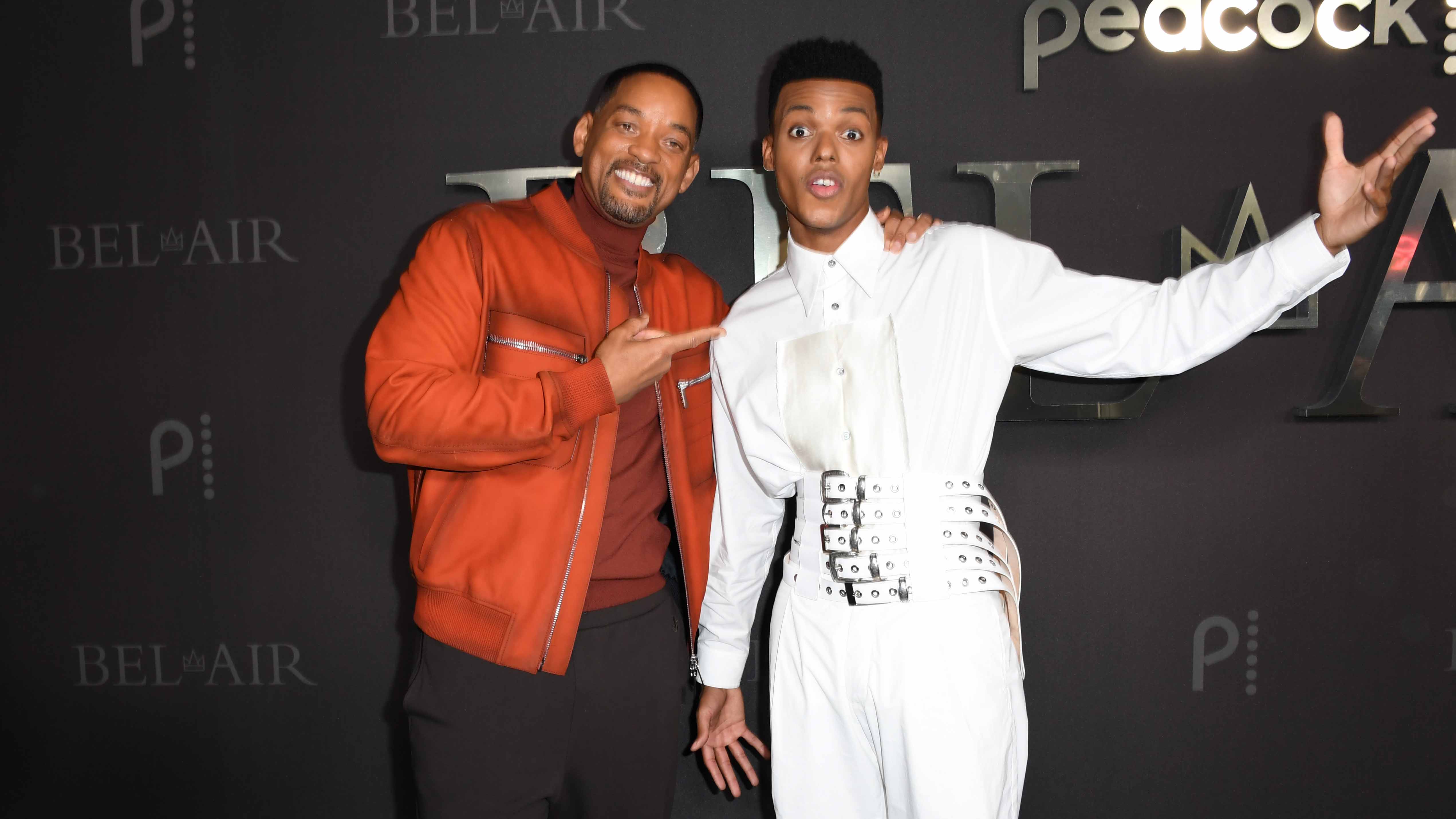Meet Pigmalion: The Man Who Fell In Love With Sculpture
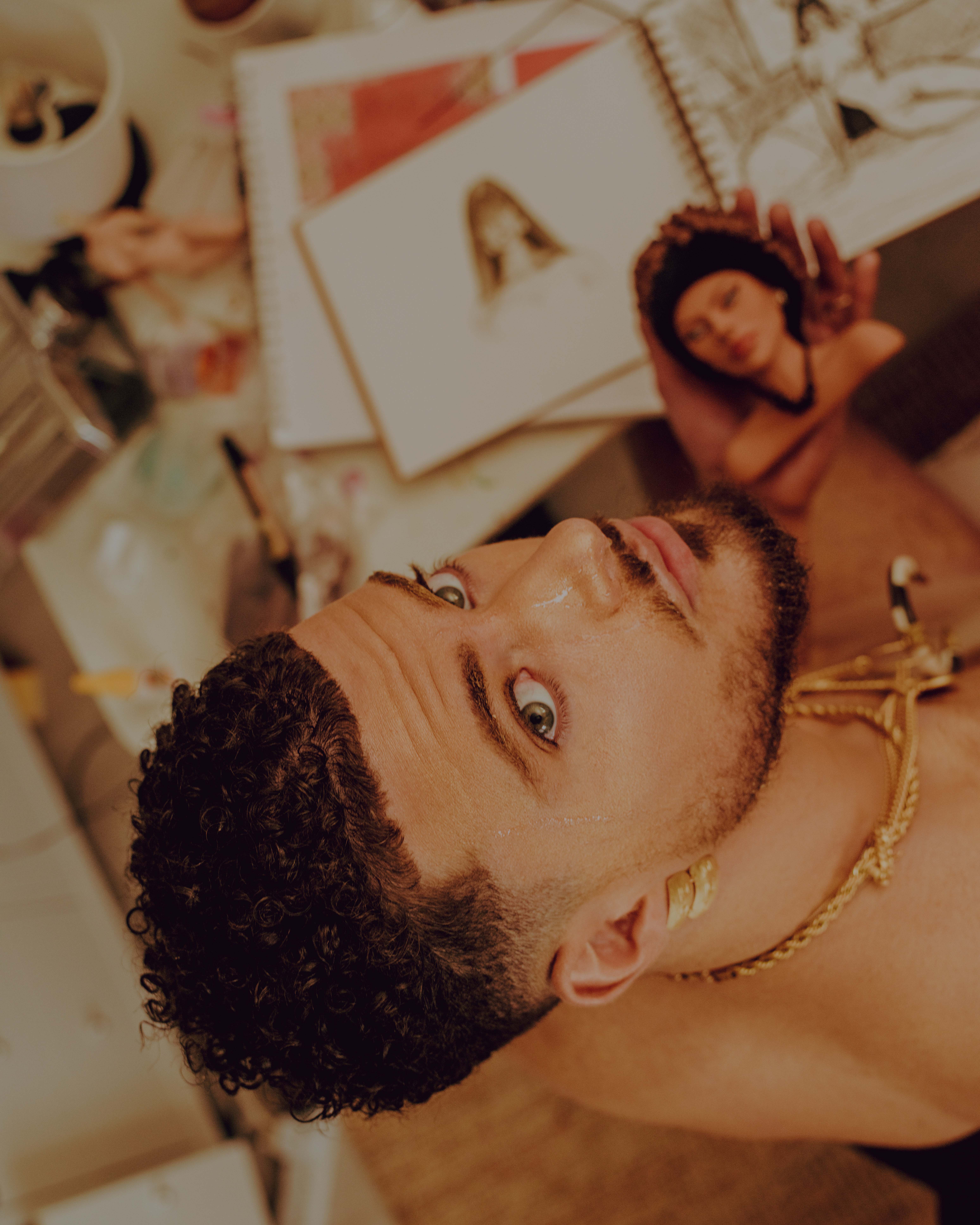
Meet Paul Joseph Harper, better known as PJ Harper, the elusive artist behind the beautiful sculptures of Black women we’ve all seen.
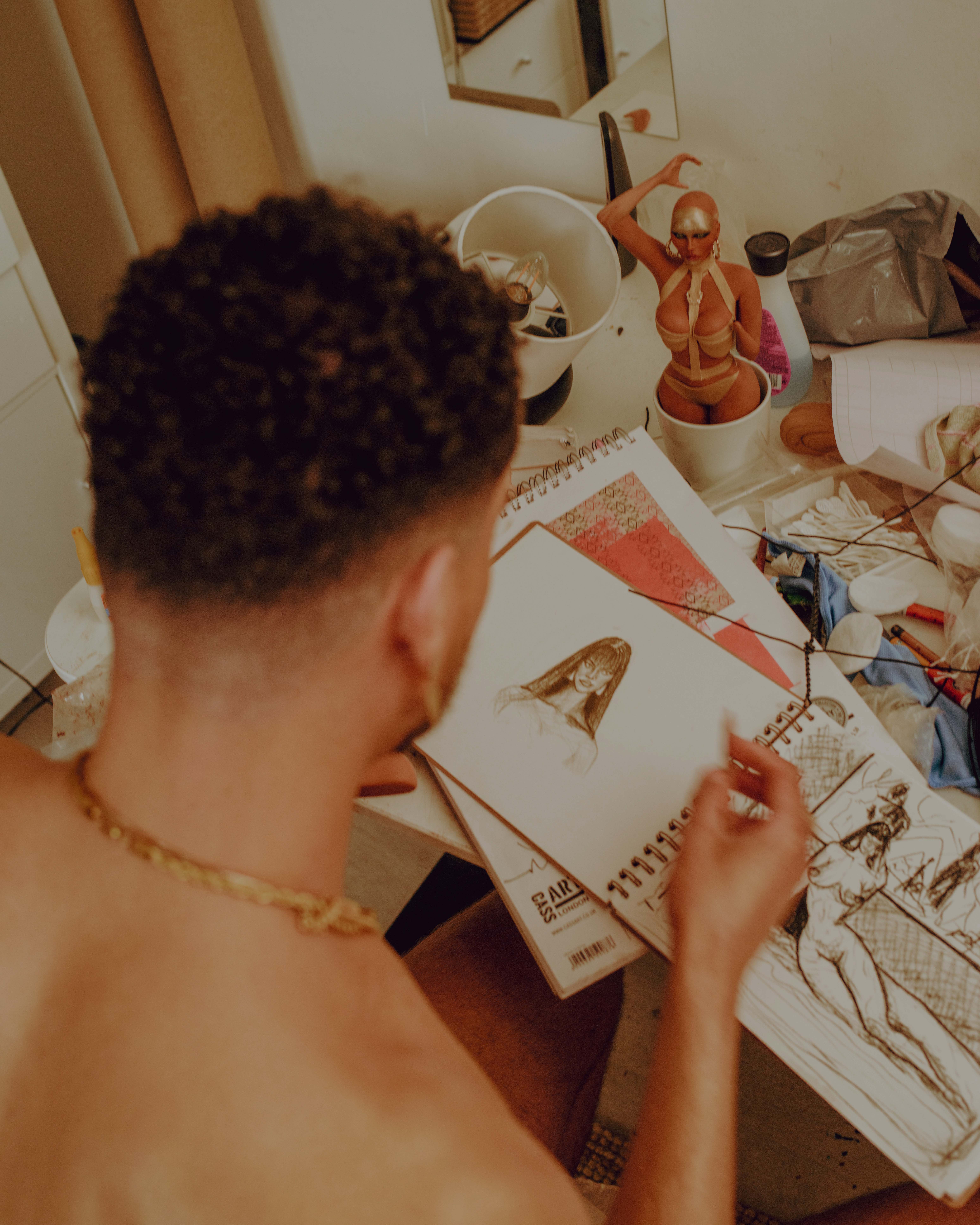
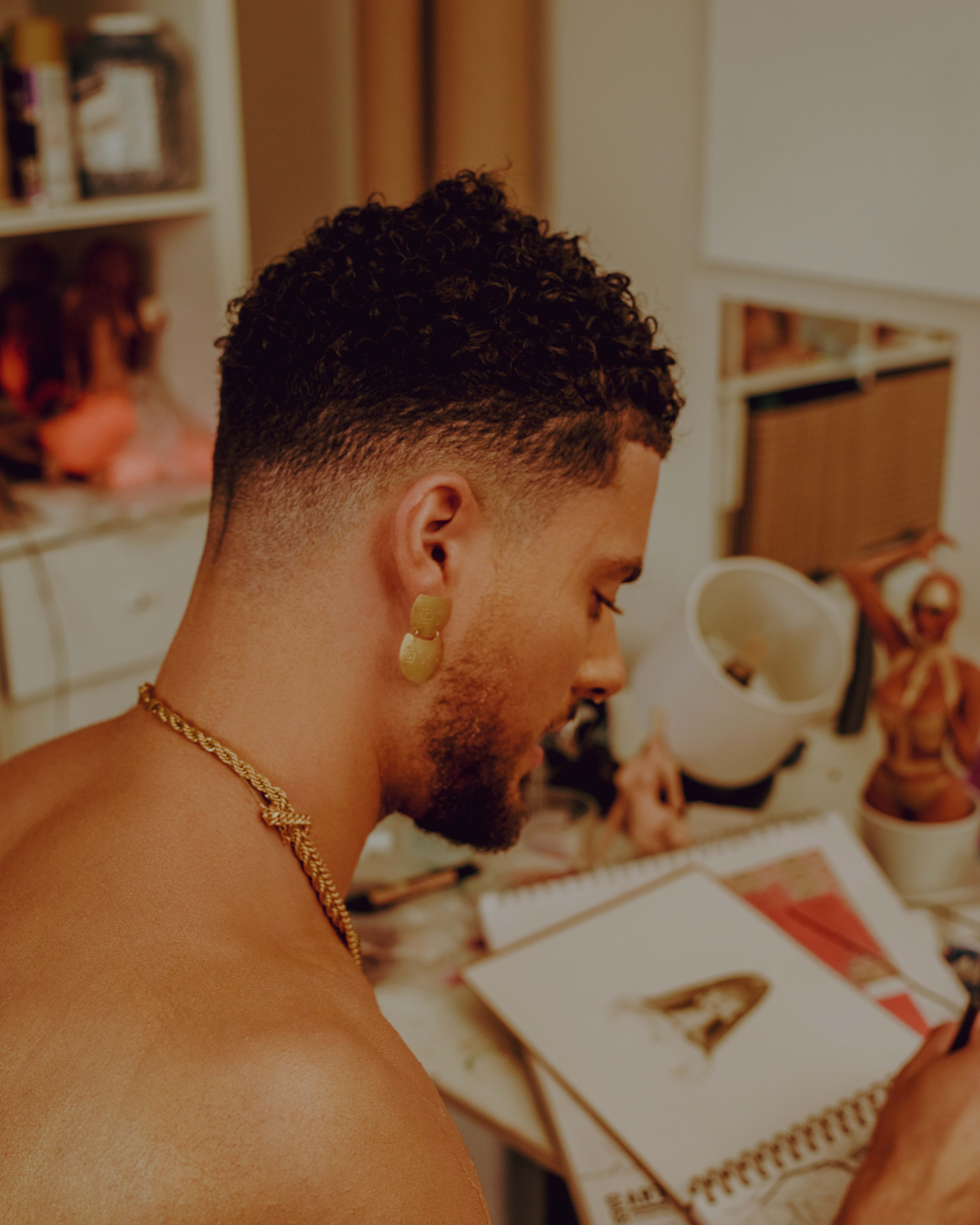
The first time I discovered PJ’s work on his art Instagram page ‘pig.malion’, my mind was blown, in particular, by the attention to detail evident in the sculptures, and the unique addition of jewellery adorning the figures. My admiration for his work led me down a Google rabbit hole to learn more about the artist. Fast forward about a year after I discovered PJ’s work, a touch of serendipity led us to meet in person, the result of which was this interview.
When we arrive outside PJ’s house In Glasgow, the recently turned 24-year-old bounds out of the door to greet us, his energy is high, and I can tell it is because he’s a bit nervous. PJ later tells me he hasn’t done a shoot in a while. His Glaswegian accent is strong when he talks quickly and is excited. It slows to a sonically pleasing lilt when he calms down. In PJ’s abode, his sculptures are everywhere, and I get to see what seems like exclusive sculptures to me, or maybe I just couldn’t remember seeing them on his Instagram art page. His studio, which doubles as a bedroom, resembles the depiction of an artist’s studio in movies; it’s a mess; in a reassuring way. There’s a sketchbook on the floor under the table, a book about boobs and soft polymer clay laying on the desk that will soon, I assume, be turned into one of PJ’s hyperrealistic sculptures.
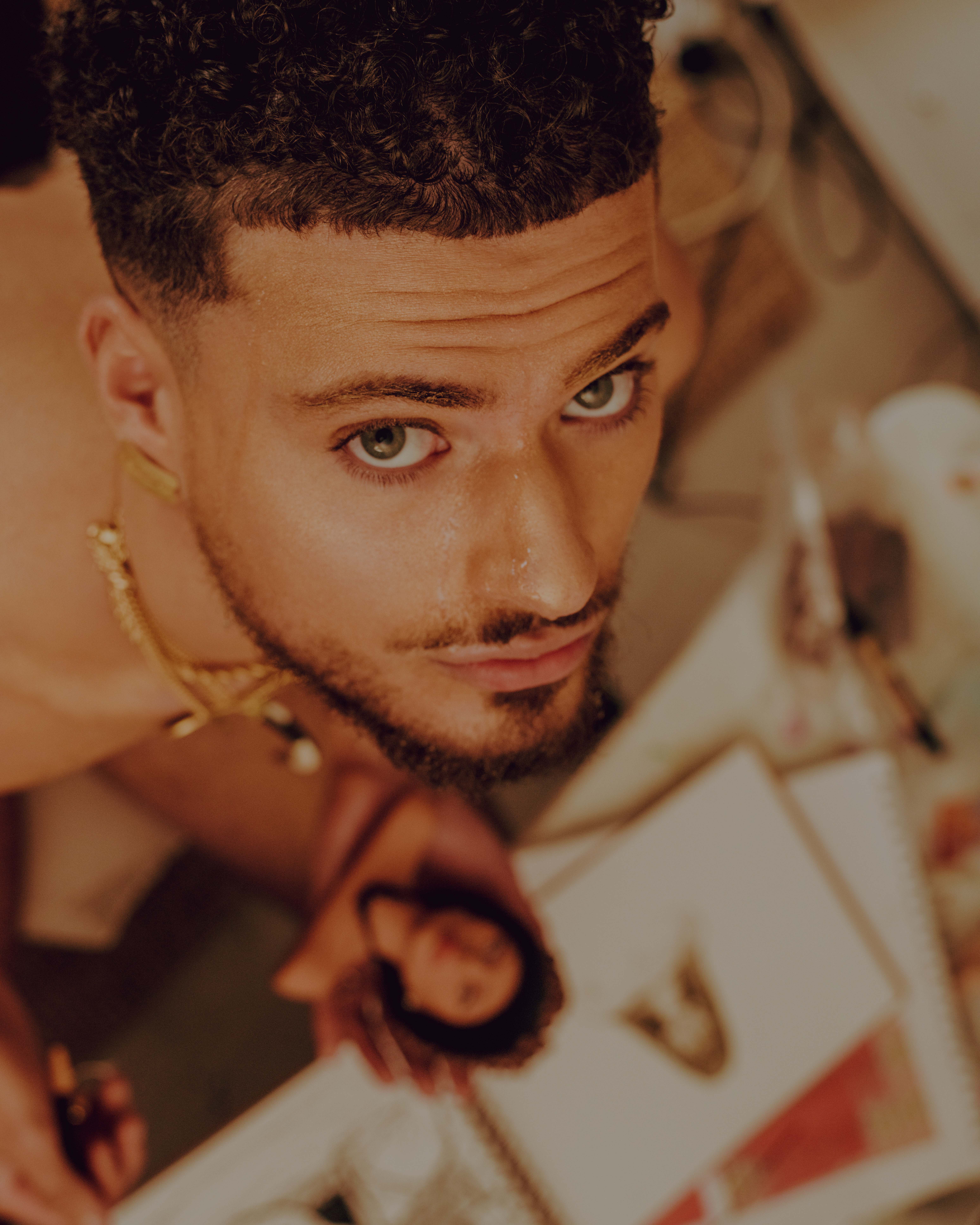
As the team chatted throughout the day, we learned about the mysterious man behind the popular sculptures depicted on the Instagram page ‘pig.malion’. The page name plays on the name of the Greek mythology Pygmalion, a tale of a king who fell in love with one of the sculptures he made, which he asked Venus to bring to life so he could marry her.
Pygmalion isn’t exactly PJ’s story, but there are parallels. From a young age, PJ was always fascinated with the human form, “I’ve always been really into figures and dolls and just miniatures things. Since being two, it’s always been a kind of fascination of mine. I’ve always had a naked Barbie doll because I decided to take their clothes off all the time and it kind of grew to, I love mermaids, and that’s carried on today”.
PJ’s namesake, his grandfather Paul Wynter, was a competitive bodybuilder and actor that PJ describes as someone he looked up to, “I was brought up in a way, having this kind of idol. A beautiful, amazing, Black man”, one of the myriad of people and experiences that have informed his artistic sensibilities.
Perhaps the most profound moment that influenced the ethos behind the work PJ makes today requires the most probing from me, and it is a testament to the importance and power of great teachers.
During our time shooting with him, PJ shared that he only makes sculptures of Black people, unless close family or friends ask him for personal figures, because sculpture is a form of high art that Black people have historically been excluded from, whether as the creator or the subject. When I speak to him again on a virtual call, I inquire how he arrived at his ethos of only making sculptures of Black people, to which he responds with an almost generic answer about representation.
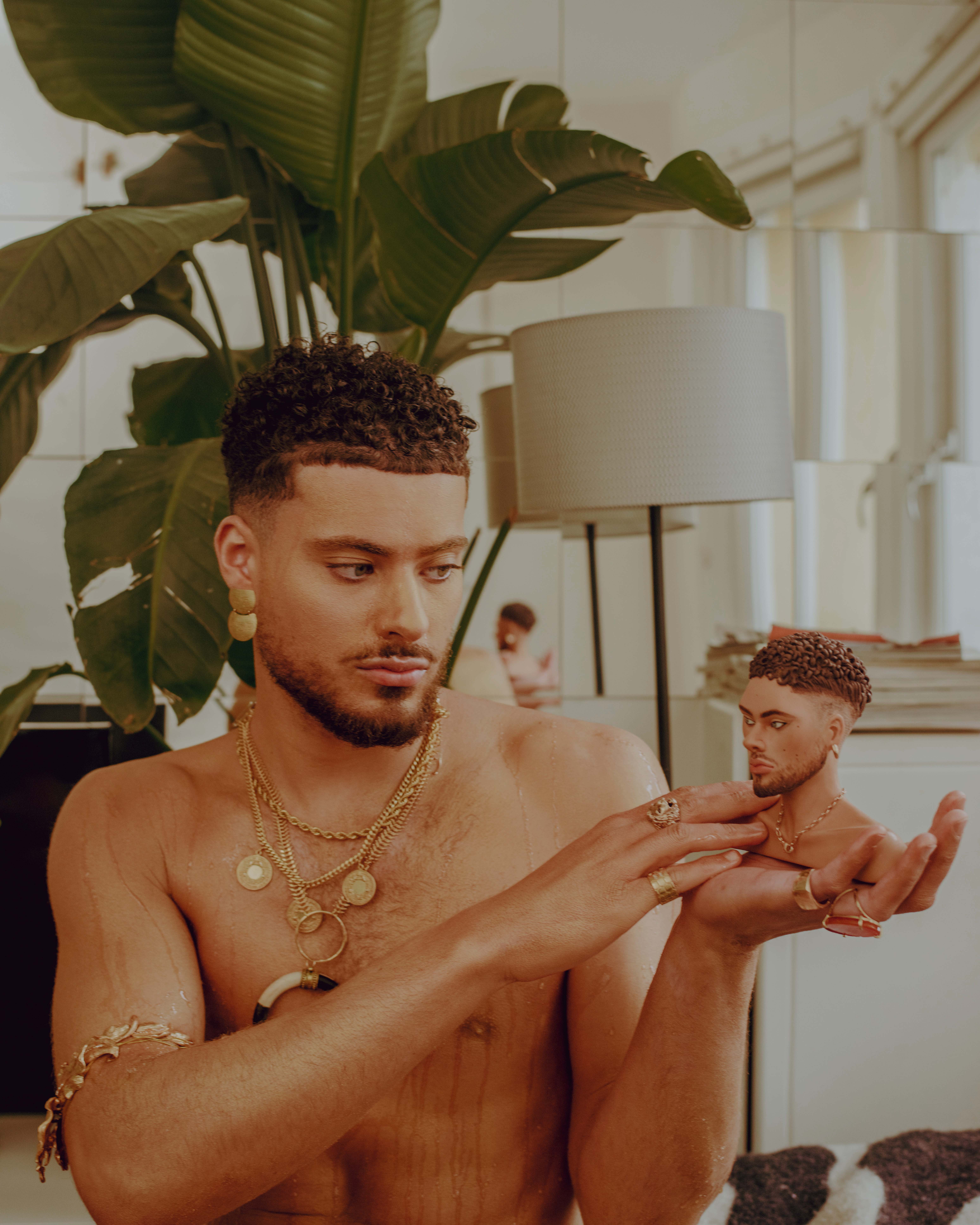
Sensing that wasn’t the whole story, I pushed further – “Did you have that from the very beginning, or was that a conclusion that you arrived at?”. The question sparked what I was looking for as PJ recounts how his art teacher asked him to think more about the why.
“So basically, I went to apply to art school, from high school with my portfolios, but my theme was always [about] the human form. It was never something that was important to me. So it was always just purely about recreating the human form, like making massive sculptures out of cardboard and stuff. But I didn’t have a theme.”
“I didn’t really know what I was doing. I was just making stuff because I was always interested in making people, like figurative work. But anyway, I applied to art school, got an interview, didn’t get in, but my friend who applied did, but she had a theme; her work was about something important to her. Then I went to this course called Tramway, and it was like a portfolio prep course for art school, and they were like, you know, work’s cool, but like, what’s important to you? And I was like, I don’t know, I don’t know. This is me like being like a wee guy; I was younger, I wasn’t really thinking [about] this too much. And then they were like, what about your mum? Like the fact that she was Black and stuff? And I was like, oh my God, yeah, of course. So since then, that course really opened up my eyes to be like, oh my God, what you can do here is important. And then I went to art school interviews, and I ended up getting a place in there, and ended up dropping out in third year cause I didn’t like it. But it was good. And it was really good at opening up your eyes to issues.”
Despite being of mixed heritage – PJ’s mum is Black, and his dad is white – PJ looks white, which has opened him up to undue criticism about his art practice, something PJ says is one of the hardest things he has had to work through.

“I remember I got posted on The Shade Room, and I think that’s maybe a big thing that happened. They’ve got a lot of following as well. But I had a lot of people come for me, being like; this white guy, cultural appropriator, making black artwork, trying to take what’s not his and things like that. I got really affected by it, it got to me, and I was like, am I wrong for doing this? I kind of realised that I need to be stronger in myself and know where I am. I’m not wrong for doing what I’m doing.”
PJ’s most surprising revelation during our conversation is that he makes work for Instagram, as content, to raise his profile, something that I hadn’t considered would be the case for him. This is a growing dilemma artists everywhere are facing in a world where social media algorithms heavily dictate what’s worthy of attention.
“I make work for constant content, to try and push out as much as I can. And I’m finding that quantity over quality isn’t the best way to go. I’ve not posted in a while, but I’ve been working because I really get stressed out when I’m like, should I post a picture of that while I’m halfway working on it, or should I post it when I’m completely done? And then I’m doing all these things. And I’m like, oh, I’ve made a mess. I just, I kind of want to plan things out, [and] take more time, and work on smaller projects, as well as bigger projects. So, I’ll always have content, because it’s quite difficult when you do all the work yourself. And people want to see loads of work constantly. And you’re like, I can only do so much work.”
This year, the first-ever exhibition PJ showed his work at was the group show BLK BOY JOY at Brixton’s Photofusion in March. Going forward, PJ has some exciting projects and collaborations in motion and has his sights set on exhibiting his work worldwide. My final question for PJ is, “Would you ever consider doing life-size sculptures?” He responds, ” I would like to try a big one, but it definitely would not be with polymer clay because I’d need a bigger oven.”
Creative Direction and Photographer Terna Jogo
Stylist El-shaddai Nyagodzi
MUA Karla Quiñonez Leon
Discover more from GUAP’s Fashion section here





![ZINO VINCI’S ‘FILTHY & DISGUSTING’EP BRINGS YOU TO THE CORE OF THE ARTIST [@ZinoVinci]](https://guap.co/wp-content/uploads/2023/10/Zino-4.jpg)


